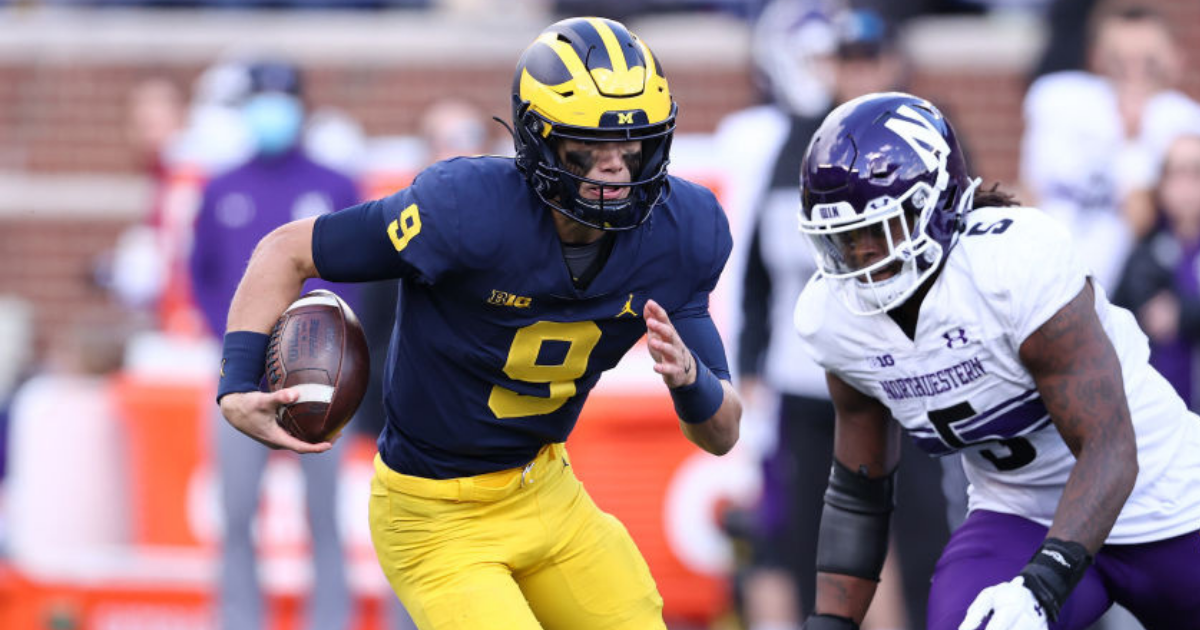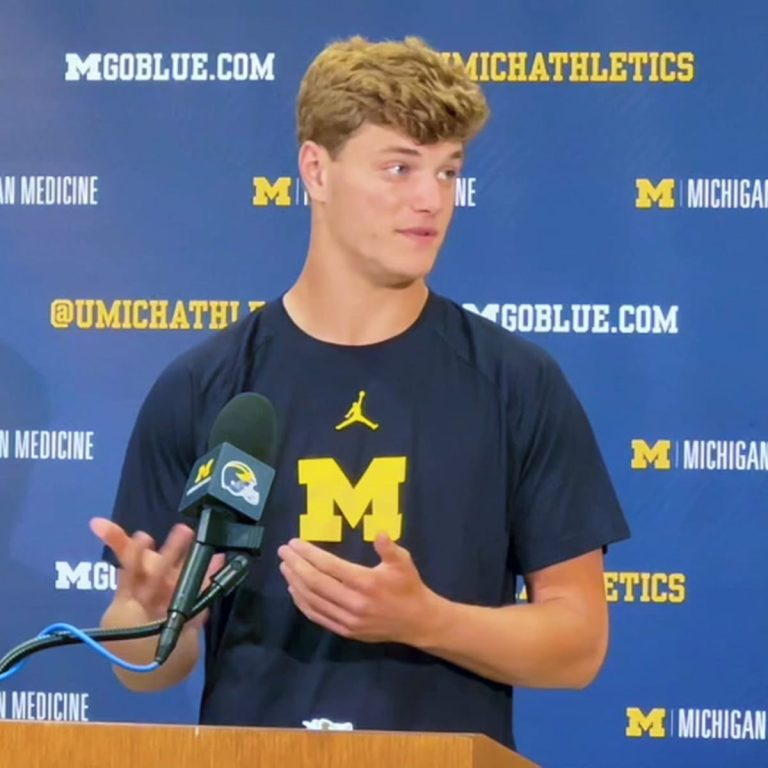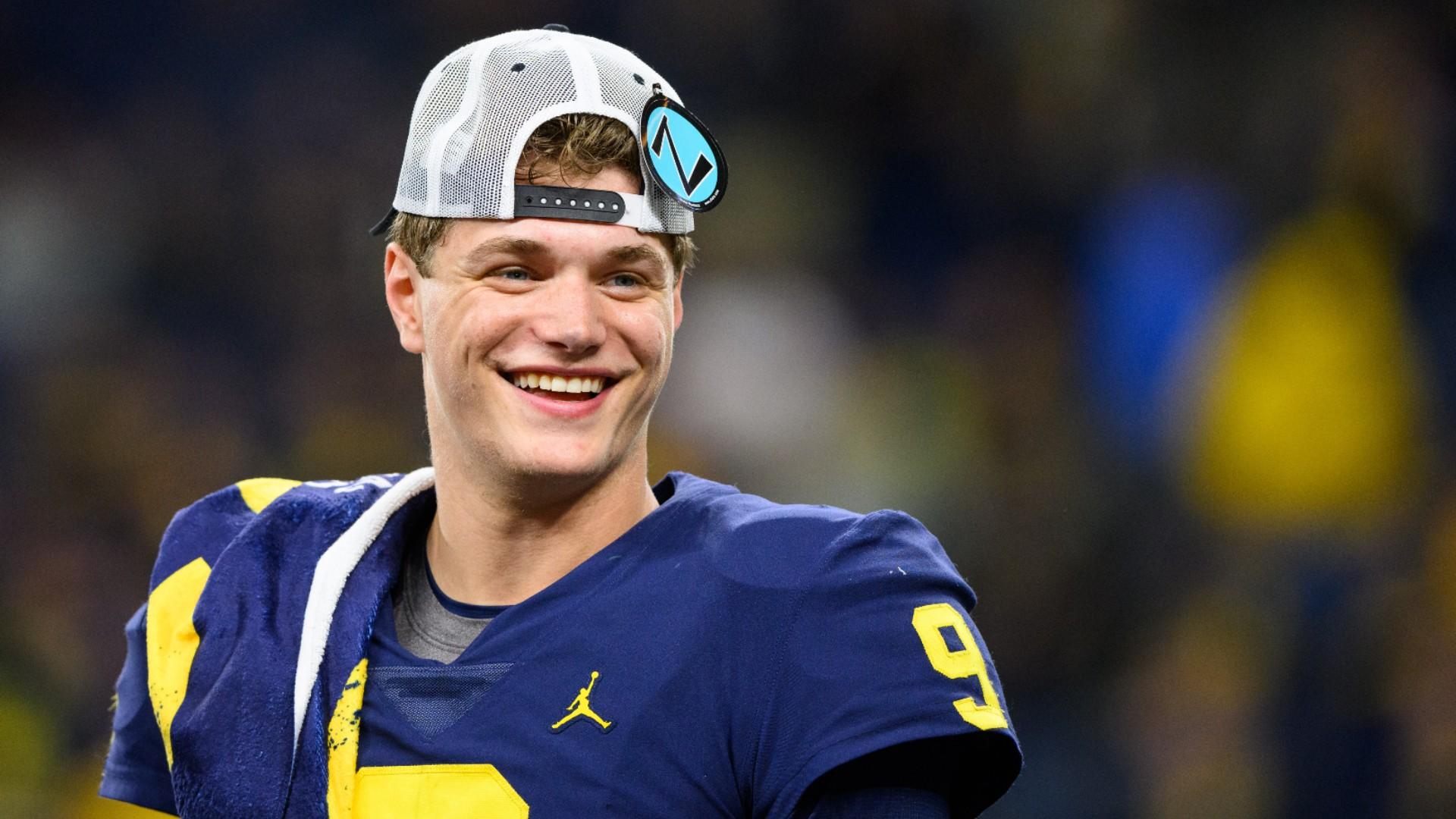JJ McCarthy’s Surgical History

JJ McCarthy, the talented quarterback for the University of Michigan Wolverines, has a history of surgical procedures that have impacted his athletic career. While these surgeries have posed challenges, they also demonstrate his resilience and determination to excel in football.
Surgical Procedures and Their Impact, Jj mccarthy surgery
The following timeline provides a detailed account of JJ McCarthy’s known surgical procedures:
- Shoulder Surgery (2019): McCarthy underwent surgery on his throwing shoulder during his senior year of high school. The surgery was performed to address a torn labrum, a common injury among athletes, particularly those who participate in overhead throwing sports. This surgery aimed to repair the torn cartilage in his shoulder joint, enhancing stability and reducing the risk of further injury. This surgery likely impacted his senior season, potentially limiting his throwing motion and overall performance. However, the surgery was successful in allowing him to return to the field and showcase his talent, ultimately leading to his commitment to the University of Michigan.
- Knee Surgery (2021): During his sophomore year at Michigan, McCarthy underwent knee surgery to address a meniscus tear. This injury is also prevalent among athletes, particularly those who engage in high-impact activities. The surgery involved repairing the damaged cartilage in his knee, promoting proper joint function and minimizing pain. The surgery sidelined him for a portion of the season, impacting his playing time and potentially limiting his development. However, he returned to the field and demonstrated his ability to bounce back from adversity, contributing to Michigan’s success.
Potential Long-Term Health Implications
While the surgeries have been successful in addressing the injuries, it’s important to consider the potential long-term health implications for JJ McCarthy.
- Shoulder: Repeated shoulder injuries, even after surgery, can lead to chronic pain, instability, and decreased range of motion. Athletes who have undergone shoulder surgery may experience increased risk of future injuries to the same shoulder, requiring additional surgeries or limitations in their athletic performance. This can be particularly challenging for quarterbacks, as throwing is a fundamental aspect of their position.
- Knee: Similarly, knee injuries, even after surgery, can lead to long-term complications such as osteoarthritis, pain, and stiffness. Athletes who have undergone knee surgery may experience increased risk of future injuries to the same knee, potentially impacting their mobility and athletic performance. The severity of these potential complications depends on factors such as the nature of the injury, the surgical procedure, and the individual’s recovery process.
Common Surgeries in Football Players

Football is a physically demanding sport that puts players at risk for various injuries. These injuries can range from minor sprains and strains to severe ligament tears and fractures. As a result, football players frequently undergo surgical procedures to repair these injuries and return to the field.
Common Surgeries and Their Recovery Times
A table outlining the most common surgeries football players undergo, along with the body parts affected, common causes, and typical recovery times, is provided below:
| Surgery | Body Part | Common Causes | Typical Recovery Time |
|---|---|---|---|
| Anterior Cruciate Ligament (ACL) Reconstruction | Knee | Non-contact twisting injuries, direct contact | 6-9 months |
| Posterior Cruciate Ligament (PCL) Reconstruction | Knee | Direct contact, hyperextension | 6-12 months |
| Meniscus Repair or Removal | Knee | Tears due to twisting or impact | 3-6 months |
| Rotator Cuff Repair | Shoulder | Tears due to overuse, impact, or falls | 3-6 months |
| Shoulder Dislocation Repair | Shoulder | Direct impact, falls, or forceful movements | 3-6 months |
| Hamstring Repair | Thigh | Tears due to sprinting, kicking, or sudden movements | 4-6 weeks |
| Achilles Tendon Repair | Ankle | Tears due to sudden forceful movements or impact | 6-12 months |
Comparing and Contrasting Surgical Procedures
The surgical procedures used for different types of injuries are tailored to the specific injury and the individual patient’s needs.
For example, ACL reconstruction involves replacing the torn ligament with a graft taken from another part of the body, such as the patellar tendon or hamstring. This procedure is typically performed arthroscopically, using small incisions and a camera to visualize the joint.
Shoulder dislocations are treated with a variety of methods, including immobilization, physical therapy, and surgery. In some cases, surgery may be necessary to repair torn ligaments or tendons, or to stabilize the joint.
Concussions are not treated surgically, but rather with rest and rehabilitation.
Potential Risks and Complications
While surgery can be an effective way to treat injuries, there are potential risks and complications associated with any surgical procedure. These risks can include infection, bleeding, nerve damage, and delayed healing.
It is essential for athletes to understand the potential risks and benefits of surgery before making a decision. They should discuss their options with their surgeon and make an informed decision based on their individual circumstances.
The Role of Surgery in Athletic Recovery: Jj Mccarthy Surgery

Surgery plays a crucial role in the rehabilitation process for athletes, particularly in the context of football, where high-impact collisions and repetitive movements often lead to significant injuries. While surgery is not always necessary, it can be a vital tool in restoring function and enabling athletes to return to their sport at the highest level.
Benefits of Surgery in Athletic Recovery
Surgery can provide numerous benefits for athletes recovering from injuries. It can help to:
- Restore anatomical integrity: Surgery can repair or reconstruct damaged tissues, such as ligaments, tendons, and bones, restoring the proper alignment and stability of the injured area. This is crucial for preventing further injury and facilitating optimal healing.
- Reduce pain and inflammation: Surgery can remove damaged or diseased tissue, reducing pain and inflammation, which can hinder rehabilitation and limit athletic performance.
- Improve range of motion and function: By repairing or reconstructing injured structures, surgery can improve range of motion and function, enabling athletes to regain the ability to perform specific movements required for their sport.
- Accelerate recovery time: Surgery can sometimes expedite the healing process, allowing athletes to return to training and competition sooner than if they relied solely on non-surgical treatments.
Limitations of Surgery in Athletic Recovery
While surgery can be highly beneficial, it also has limitations:
- Risks and complications: Like any surgical procedure, there are inherent risks and potential complications associated with surgery, such as infection, bleeding, and adverse reactions to anesthesia.
- Recovery time: Recovery from surgery can be lengthy and require significant rehabilitation, which may involve weeks or even months of physical therapy and rest.
- Cost: Surgical procedures can be expensive, which may pose a financial burden for athletes and their families.
- Not always the best option: In some cases, non-surgical treatments, such as physical therapy, medication, and bracing, may be more appropriate and effective than surgery, particularly for less severe injuries.
Rehabilitation Program for a Football Player
A comprehensive rehabilitation program for a football player recovering from a significant injury, such as a torn ACL, might include:
- Surgical intervention: If necessary, surgery would be performed to repair or reconstruct the torn ACL, using a graft from another part of the body, such as the patellar tendon or hamstring.
- Post-operative immobilization: Following surgery, the injured leg would be immobilized in a brace or cast for several weeks to allow the graft to heal and prevent further injury.
- Physical therapy: Once the immobilization period is over, the athlete would begin a structured physical therapy program focused on regaining range of motion, strength, balance, and proprioception (the ability to sense the position of the body in space). This program would progress gradually, starting with basic exercises and progressing to more advanced drills as the athlete recovers.
- Medications: Pain medications and anti-inflammatory drugs may be prescribed to manage pain and reduce inflammation during the recovery process.
- Functional training: As the athlete progresses through rehabilitation, they would begin incorporating functional training exercises that mimic the movements required for football, such as running, jumping, cutting, and tackling. This helps to prepare the athlete for a safe return to the sport.
- Return to play: The athlete’s return to play would be carefully monitored and guided by the medical team, ensuring they are fully recovered and have regained the necessary strength, flexibility, and coordination before resuming high-impact activities.
Jj mccarthy surgery – JJ McCarthy’s surgery is a reminder that even the strongest athletes can face physical challenges. A torn meniscus, as described in this article, torn meniscus , is a common injury that can affect athletic performance. While JJ McCarthy’s surgery may be a setback, it’s also an opportunity for him to heal, strengthen, and return to the field with renewed determination and resilience.
JJ McCarthy’s surgery may have been a challenging hurdle, but it presents an opportunity for growth and resilience. Just as a torn meniscus requires a dedicated recovery process, torn meniscus recovery is a journey of healing and strengthening. Similarly, JJ’s surgery is a chance to come back stronger, both physically and mentally, and to embrace the lessons learned along the way.
